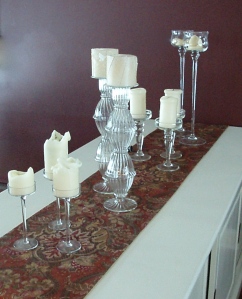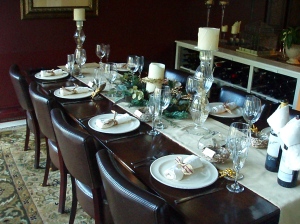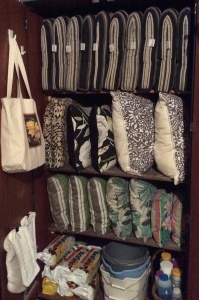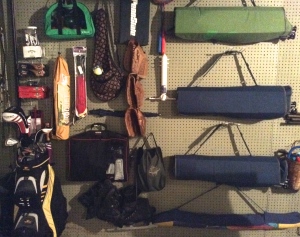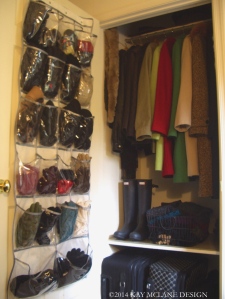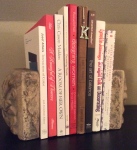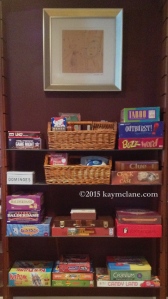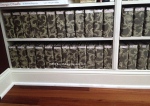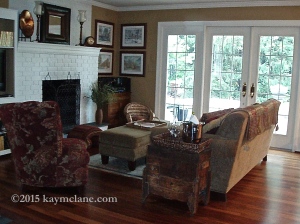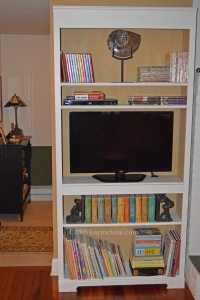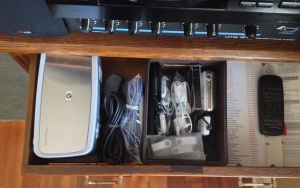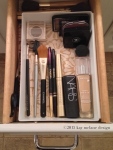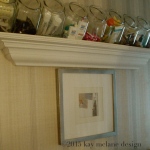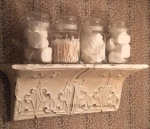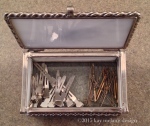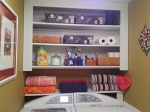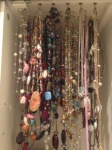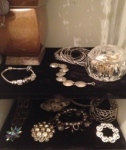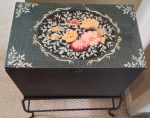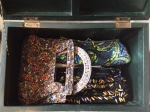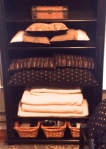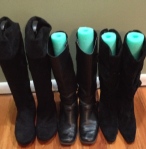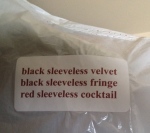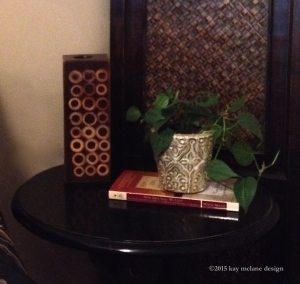Two weeks ago, I started talking about “tablescapes” and today we’ll continue with some of the “formulas” or “structures” you can use to create them.
Formulas/Structures:
Although the ways that you display objects are as limitless as the items themselves, these are my “top 10” tablescape layout “formulas”:
1. rule of three: one of the most basic design “rules” (or guidelines, since I’m not a big fan of rules) is this: the eye processes things more easily in odd numbers, which is why, if you pay attention to details, you’ll often see groupings of three (or five or seven). photo- this basic arrangement, on a front porch table, has three different elements (the two candlesticks and the plant) that are different heights. As a bonus, the colors of those items marries with the wreath, pillows and other greenery
2. asymmetrical: shorter object(s) on one side, a taller object on the other side (like a sculpture or vase). photo- the items on this dresser not only blend well with the furniture, they also tie into the contemporary artwork behind them. Typically, I’d place the small dish with the other low item (the jewelry box), but in this case I wanted it to “soften” the weight of the sculpture
3. balanced asymmetry: even in “balanced” compositions, the elements don’t have to match. photo- this works because the two tall candlesticks on the right are balanced by the heavy triple candle holder on the left; the matching stockings create a unified look with the wreath
4. high/low: large artwork hung on a wall (or leaning), with low objects in front of the art. photo- the artwork in the back is complemented by the fossil and piece of stone below and in front of it; the vase to the right is not part of the 3 piece composition but is an example of “marrying” art with other elements
5. “tray it”: 1 tray with the “rule of 3”, centered or to one side. photo- this small tray holds three different elements that, on their own, might be lost; this method works with large or small trays
6. clean and streamlined: just 1 element (chessboard, large art book, large-scale item). photo- this scale with tomatoes “reads” as one clean element
7. reading material: cover most of a surface with stacks of books or magazines- either keep the height of the stacks very close to one another or vary the heights significantly. This is a great way to use a dining room table that rarely has anyone dining on it! photo- if you love to read physical books or magazines use them to add interest to a horizontal surface
8. build in some “rhythm: rhythm is one of the principles of design and a great way to tablescape. photo-this example of rhythm shows a run of candlesticks- all in clear glass with off white candles
9. from the top down: this is a low arrangement (think of it as a “bird’s-eye view”). photo- generally used where you need to be able to see over the surface–like in this coffee table setting; there are three distinct areas all tied together by scale and color
10. tall, fat, flat: three items that are tied together by style or finish, but representing different shapes. photo: this clock, vase and bowl, all in brushed silver are a great example of this formula
Now you know some of the formulas that you can use to create your own impactful tablescapes. Look at the items that you own, that also bring you joy, and play around with them to see what interesting combinations you can come up with.
Until we meet again, enjoy your home!
I’ll “see” you in the New Year,
Kay
©2015 kaymclane.com
- #1- rule of three
- #2- asymmetrical
- #3- balanced asymmetry
- #4- high/low
- #5- “tray it”
- #6- clean & streamlined
- #7- reading material
- #8- build in some “rhythm”
- #9- from the top down
- #10- tall, fat, flat










